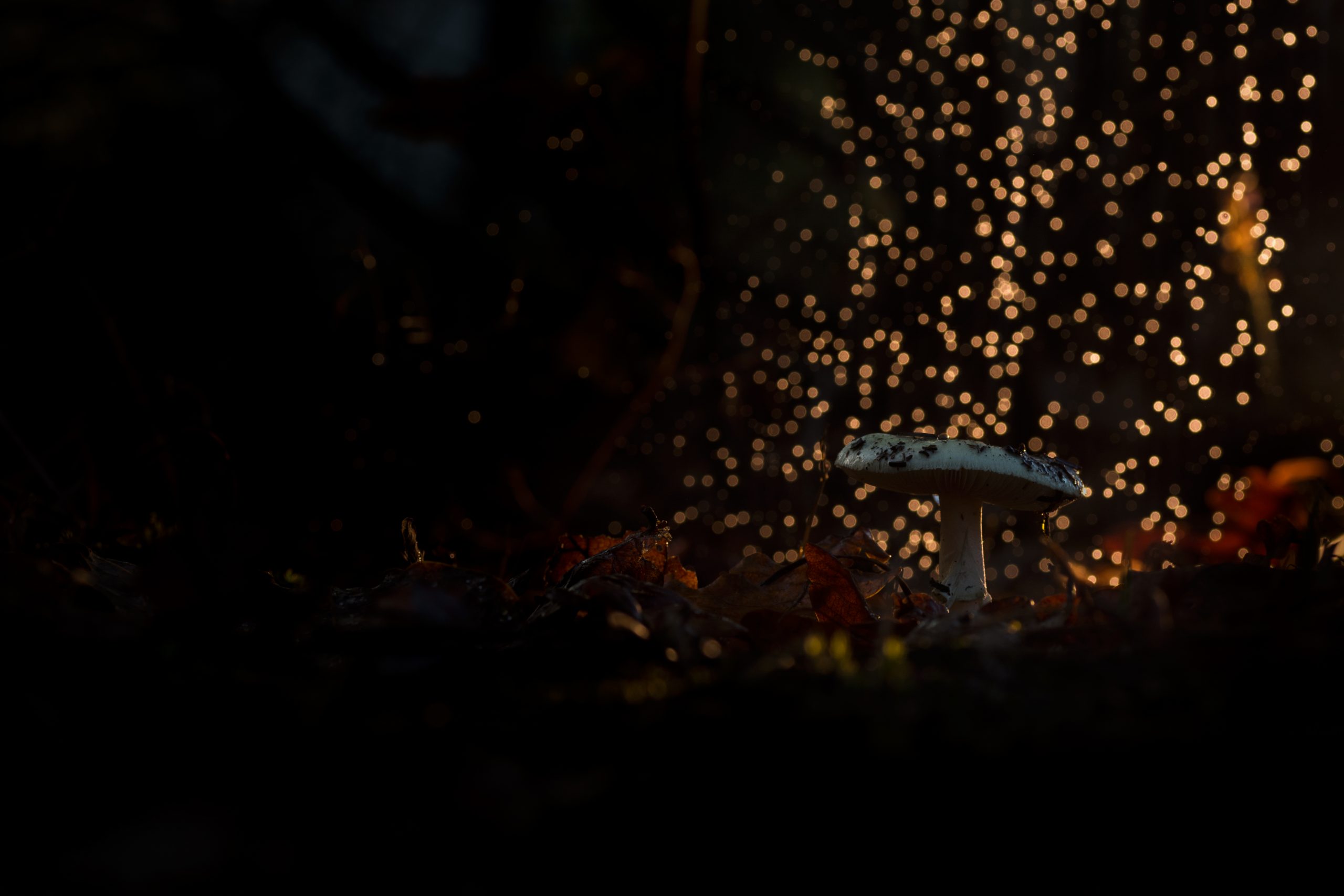With the autumn the days begin to get colder and wetter, the leaves start to change colour and the first mushrooms appear. These fungi can be found essentially during Autumn and Winter, in dark and humid places, growing almost overnight.
Mushroom photography does not sound very compared with other subjects – as birds, mammals or flowers – but has its appealing when magic and the results can be quite interesting. In this article I will present you five tips to get better photos of mushrooms.
1. Get down low
The angle from which you photograph is very important. Usually, getting as low or lower than the mushroom works well. This technique creates an intimate perspective of the subject, showing its world. It also helps to isolate the subject, which is an essential characteristic of this type of photography. Mushrooms usually grow in places with vegetation, which can lead to confusing scenes. To cancel this effect, it is important to try different angles and choose the best that suits the image you have in your mind. Another way to solve this problem is to use the vegetation itself in your favour, including it in the foreground. The foreground will be out of focus, covering the distractions next to the subject.

2. Dealing with shallow depth of field
When the subject is close, shallow depth of field is a common challenge. In these cases, I usually choose an aperture of f/8, however sometimes it’s not enough. When I need a larger depth of field, I choose to stack several images together with different focus points, technique known as Focus Stacking. In the end you end up with all the parts of the subject in focus, while keeping the background out of focus.

3. Use a reflector to handle the (low) natural light
Because natural light is something that does not abound in this type of photography, it is often necessary to fill the darker areas of the image. A flash is an option, but I prefer to manipulate natural light, using a reflector. The flash works well to bring out features that help make the image more interesting, for example, illuminate water droplets.

4. Use a tripod
With only a digital camera you can get great images of mushrooms. However, there are some extra items that can be helpful. Because mushrooms grow in poorly lit places, it is common to work with low shutter speeds. For that reason, a tripod can be very important.

5. Opt for a macro lens or extension tubes
Any lens can be used to photograph mushrooms, depending on the size of the subject and the aesthetic desired.
Although macro lenses are preferentially used in this context, especially for smaller subjects, there are cheaper options, such as extension tubes, that can provide similar results.
If you only have a camera and a lens, the lack of the rest of the gear should never prevent you from trying to photograph mushrooms, because the referred techniques are much more important than the gear.
After all, there is no absolute rules to follow. It’s a matter of being creative, experiment different techniques, and not over-complicate compositions.

Thank you for reading this article. If you have any questions or suggestions feel free to contact me.
